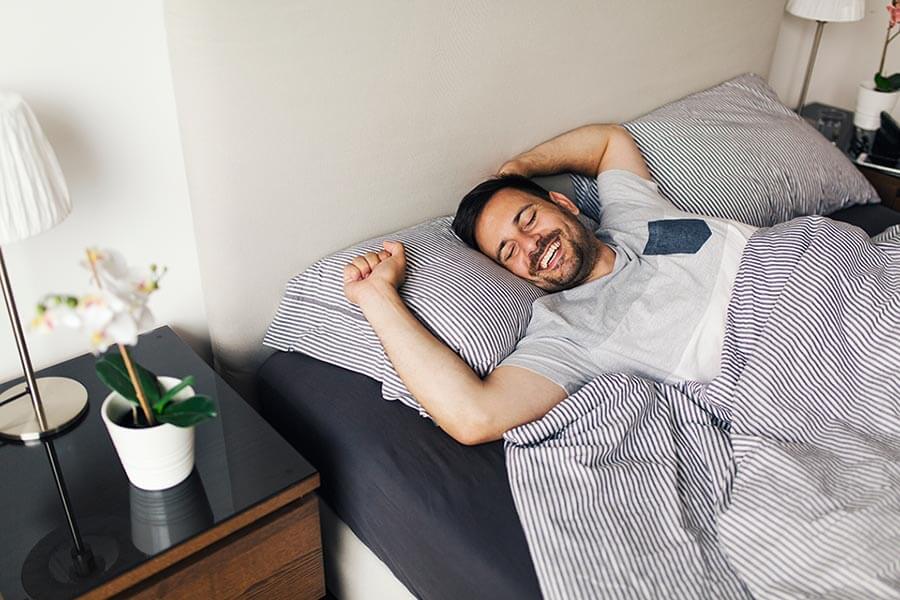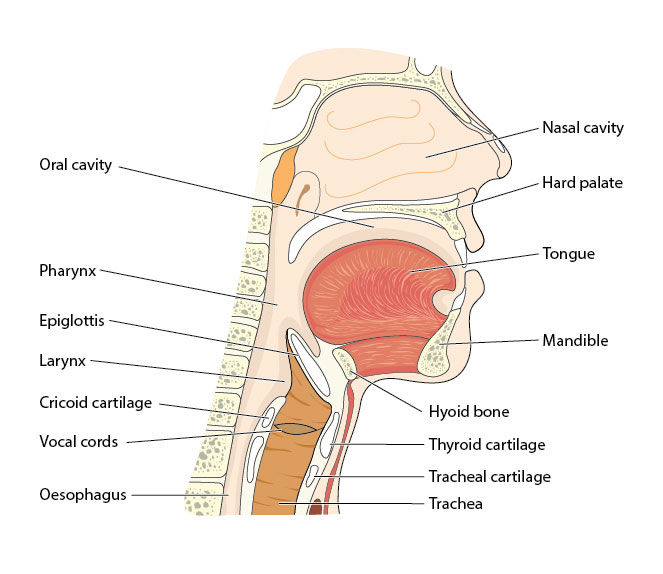Natural Relief for Sleep Apnea

It’s a challenge getting a good night’s rest if you’re suffering from sleep apnea. The constant interruptions in your breathing can leave you feeling exhausted and irritable the next day. If you’re looking for alternative approaches to sleep apnea relief, mouth and throat exercises may be worth considering.
At Texas Dental Sleep Services, our providers and their teams are dedicated to helping patients improve their sleep and overall health. With an emphasis on continuous training and education in dental sleep medicine, our providers have seen firsthand the benefits of myofunctional therapy, a type of therapy that focuses on strengthening the muscles in the mouth and throat.
Holistic & Alternative Approaches to Sleep Apnea Relief
While there are no substitutes for sleep apnea treatment, there are several exercises you can practice daily that will make it easier for your throat to remain clear while you sleep. These exercises are best practice even if using a CPAP or oral device.
According to a 2009 study, on average, patients who practiced daily breathing exercises saw a 39% reduction in the severity of their symptoms. Performing these exercises can also help with secondary symptoms, such as headaches, heartburn, and TMJ pain.

How Do These Mouth & Throat Exercises Work?

Obstructive sleep apnea is caused by the relaxation of the muscles at the back of the throat. When these muscles relax, the airway closes as you breathe and disrupt the oxygen’s flow to your lungs. By strengthening these and surrounding muscles, you can help defend against this collapse in the airway.
Myofunctional therapy is a collection of exercises that focus on the oropharynx. The oropharynx is a specific part of the throat that lies between the soft palate and the hyoid bone. It includes the side and back walls of the throat, as well as the back third of your tongue.
There are no risks, and the improvement from consistent myofunctional therapy can drastically alleviate symptoms from moderate to mild sleep apnea.
Be Consistent with Myofunctional Therapy
Our providers recommend practicing myofunctional therapy exercises to help strengthen the muscles in the back of the throat and prevent airway collapse. By consistently doing these exercises, you may experience a significant reduction in the severity of your sleep apnea or snoring symptoms.
However, it’s important to note that consistency is the key to seeing results. We suggest performing mouth and throat exercises for at least 10 minutes a day for three months, ideally two to three times a day, for maximum effectiveness. Just like other exercises, it takes time to build your muscles and see improvements.
The good news is that myofunctional therapy exercises are simple and easy to perform almost anywhere, so you can easily fit them into your daily routine. And the benefits are worth it, as improved sleep quality can have a positive impact on your overall health and well-being.

Frequently Asked Questions
Can I do these mouth & throat exercises without undergoing sleep apnea treatment?
It’s important to note that these exercises aren’t a substitute for full treatment, and patients should consult with their doctor before beginning any new treatment plan. However, myofunctional therapy is a safe and effective approach that can complement other sleep apnea treatments.
What lifestyle changes or habits should I adopt to complement my myofunctional therapy?
In addition to performing the recommended myofunctional therapy exercises, patients may benefit from adopting certain lifestyle changes or habits that can complement their treatment. This may include:
- Maintain a healthy weight.
- Avoid alcohol and sedatives before bedtime.
- Sleep on your side.
- Practice good sleep hygiene, such as going to bed and waking up at the same time each day.
How often should I follow up with my sleep apnea dentist to assess my progress and make any necessary adjustments to my treatment plan?
The frequency of follow-up appointments may vary depending on your needs and treatment plan. Generally, dentists recommend following up with your sleep apnea dentist regularly to assess your progress and make any necessary adjustments to your treatment plan.
This may involve:
- Monitoring changes in snoring and sleep quality
- Performing additional tests to assess the effectiveness of the treatment
- Adjusting the myofunctional therapy exercises as needed
You should work closely with your healthcare provider to determine the appropriate follow-up schedule based on your individual needs.
Sleep Soundly with Myofunctional Therapy
If you’re looking for alternative approaches to sleep apnea relief, call Texas Dental Sleep Services at (833) 275-3372 to schedule your appointment. You can also request an appointment by filling out our online contact form below. Or find a doctor in your area.
With our knowledge and experience in dental sleep medicine and myofunctional therapy, you can improve your sleep and overall health. In our four main centers: Dallas, San Antonio, Houston, and the Valley (McAllen), we treat patients in our offices, as well as at nursing homes, assisted living centers, and retirement communities throughout Texas. We look forward to seeing you soon.
